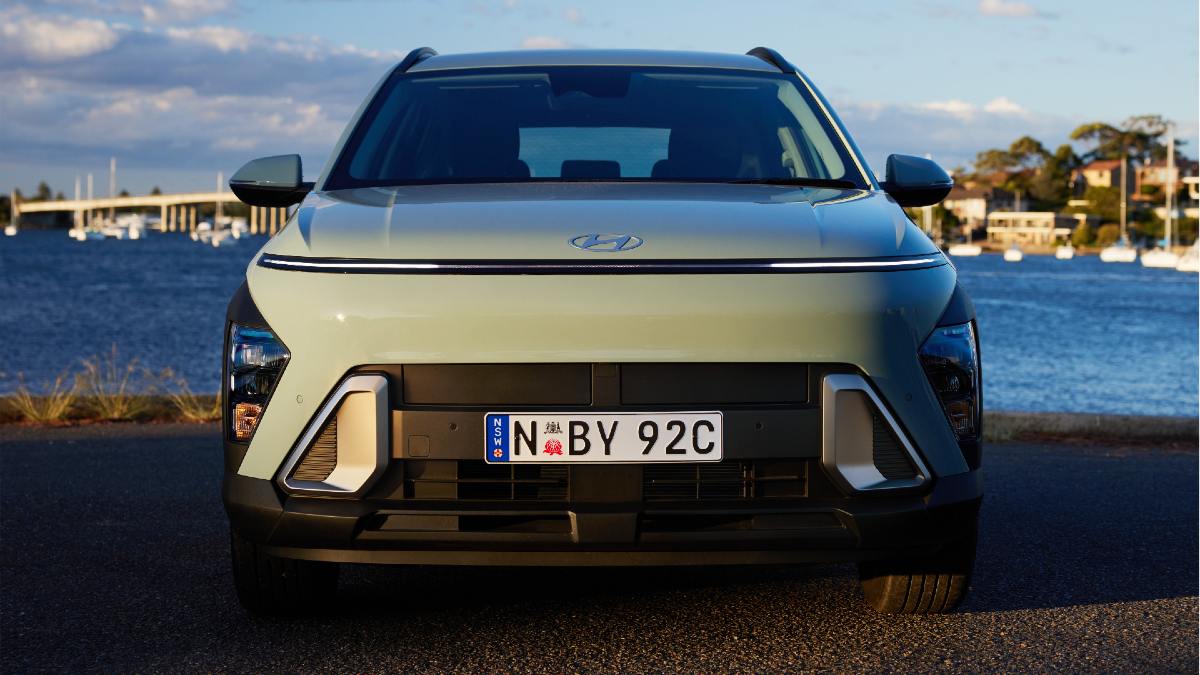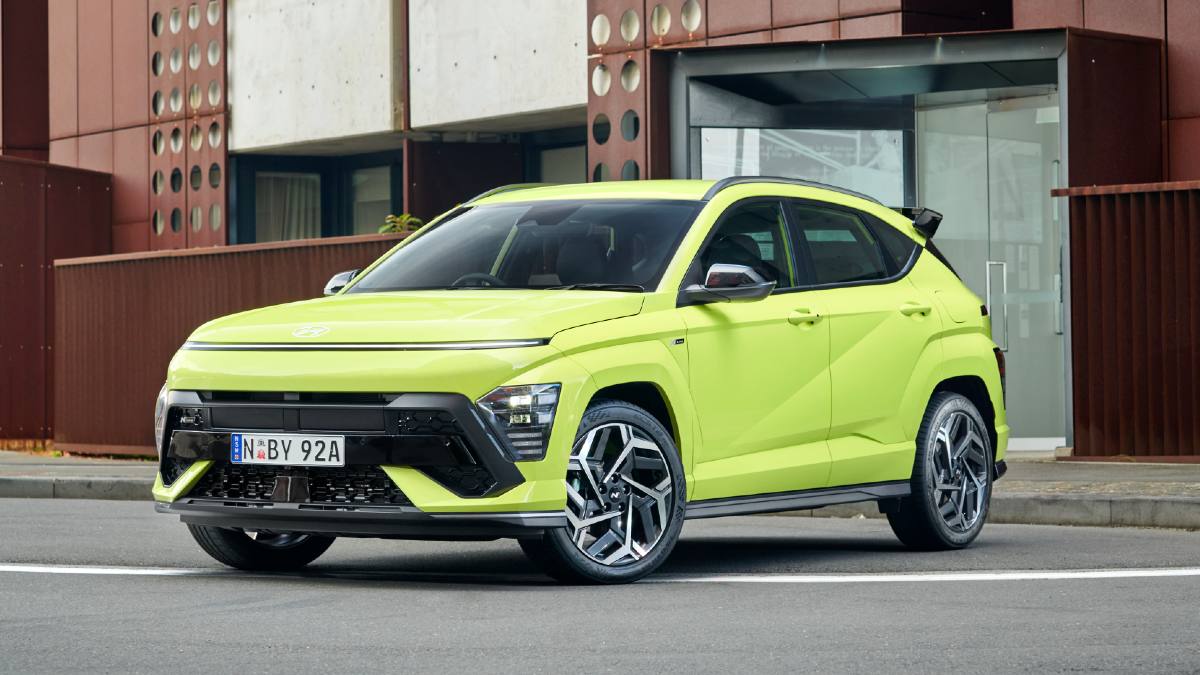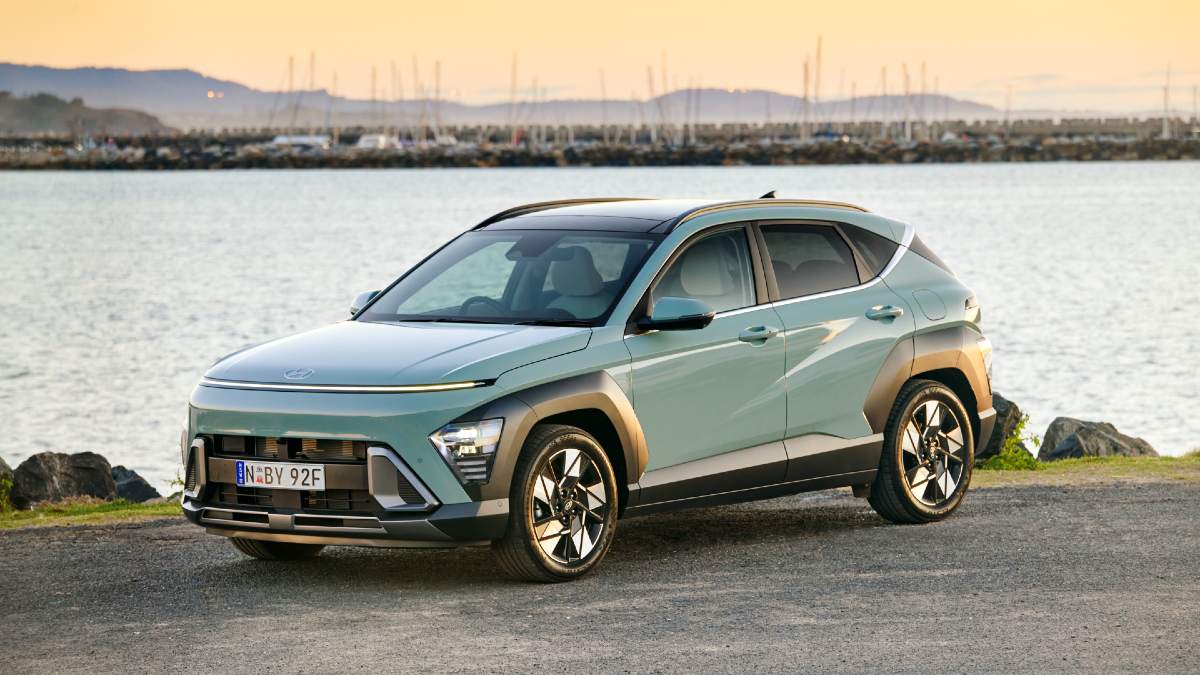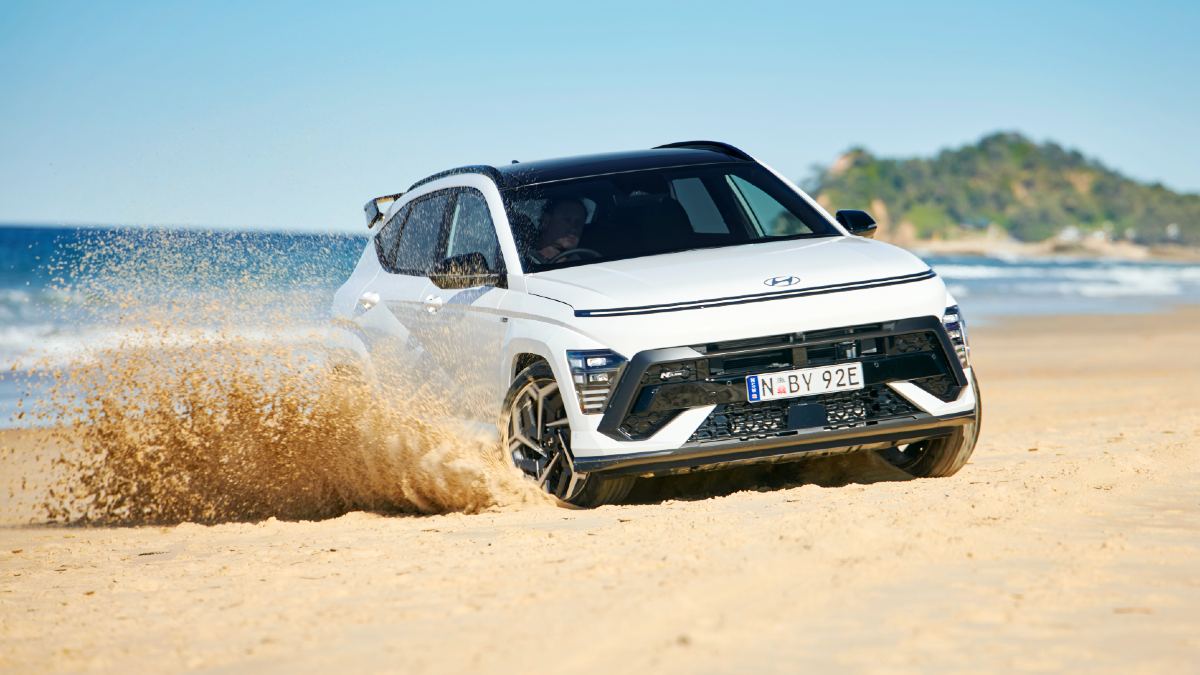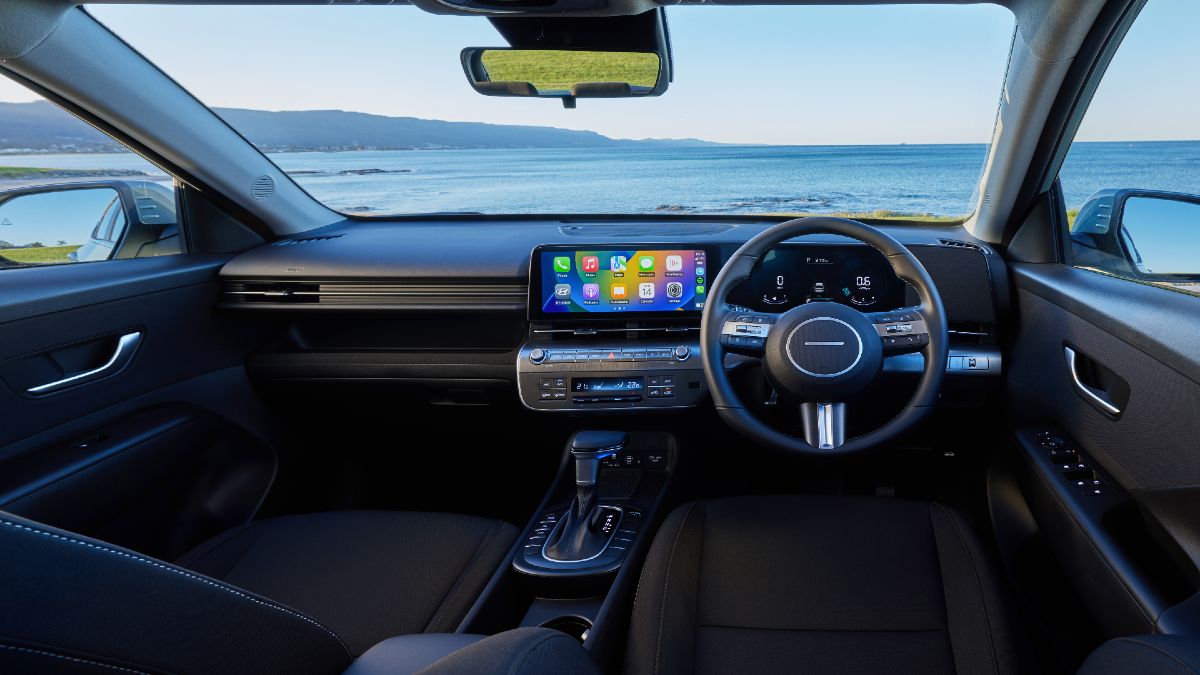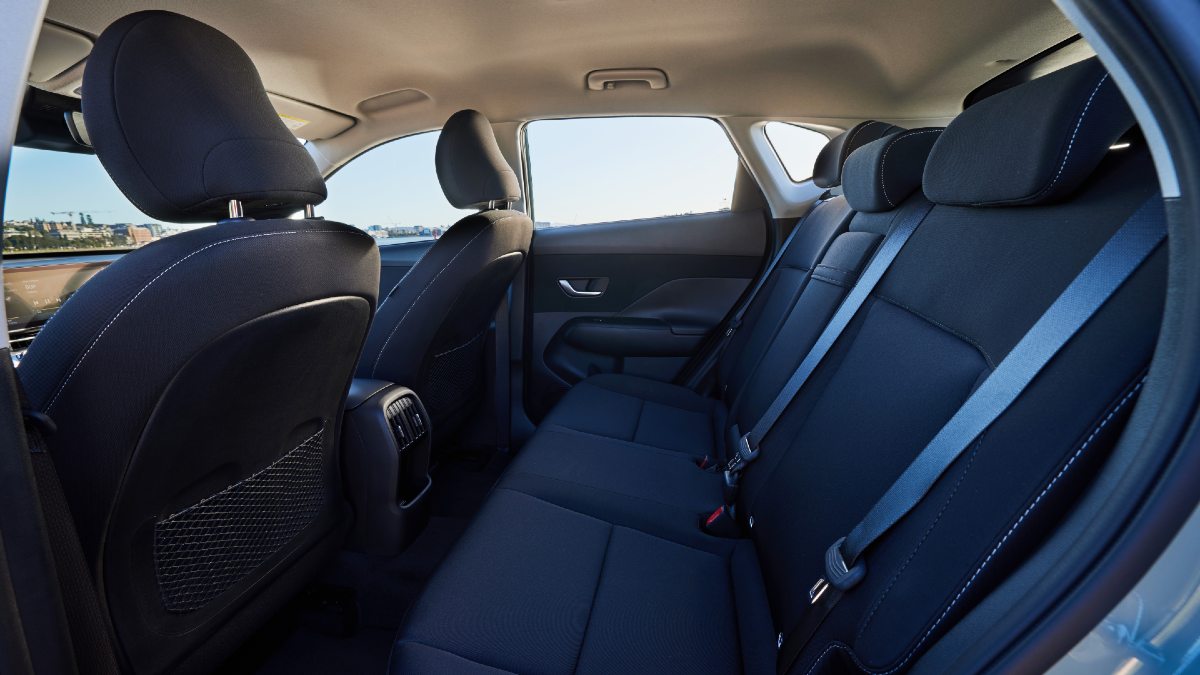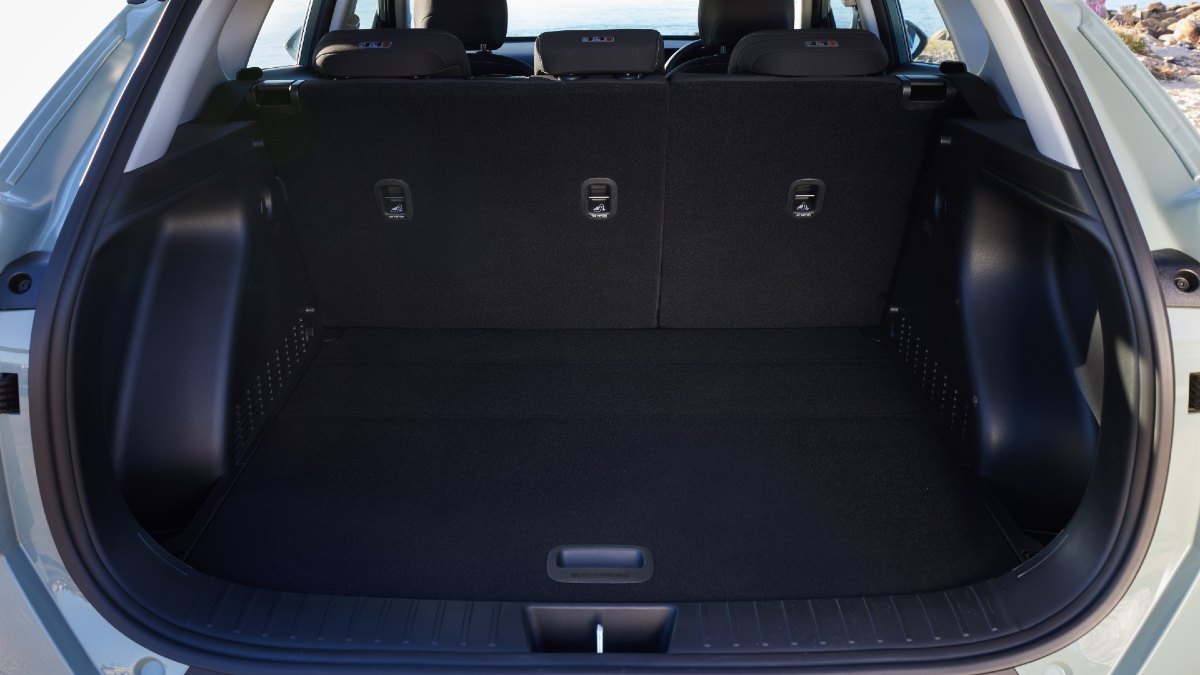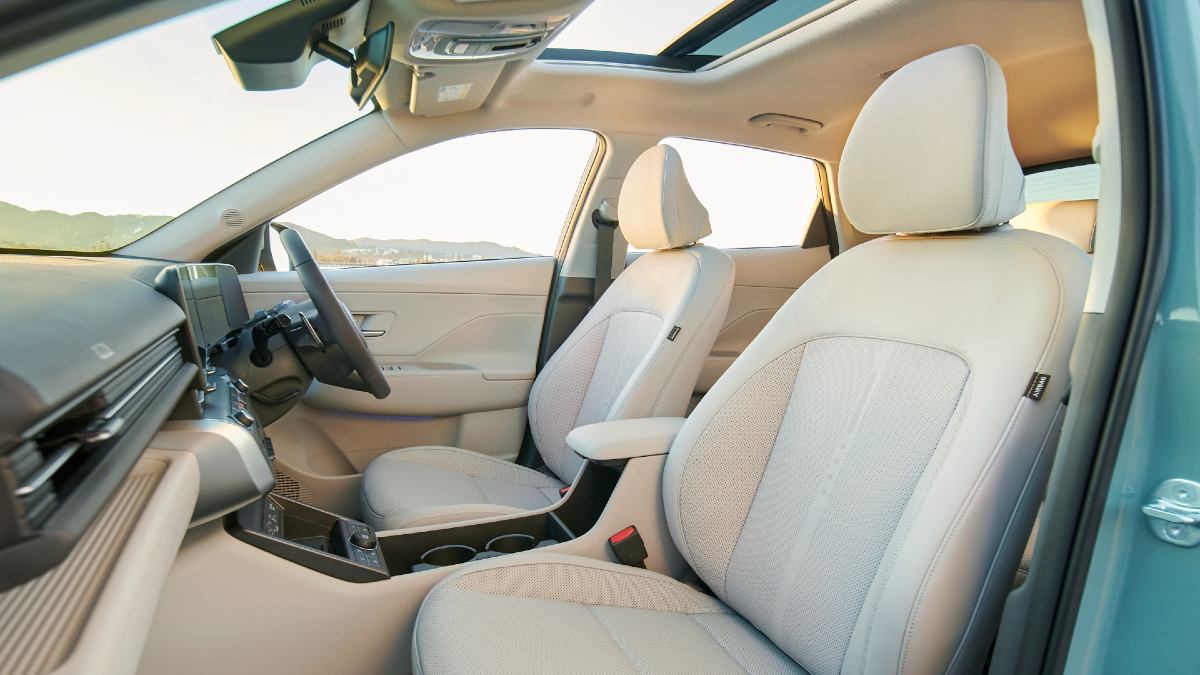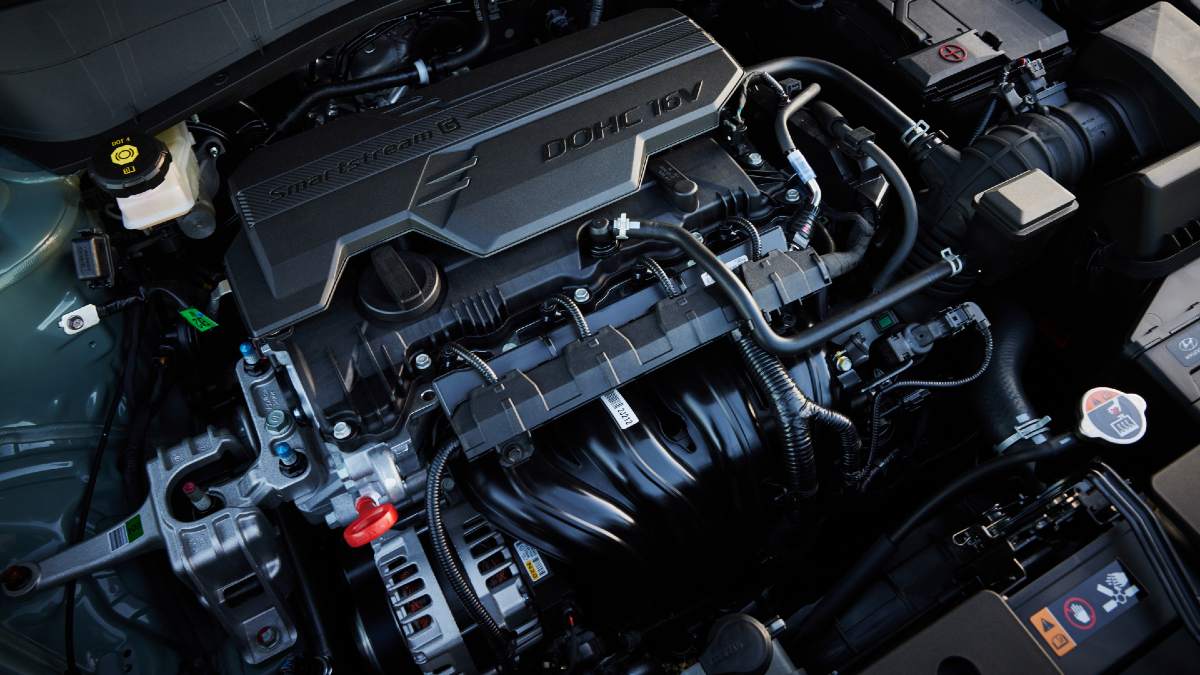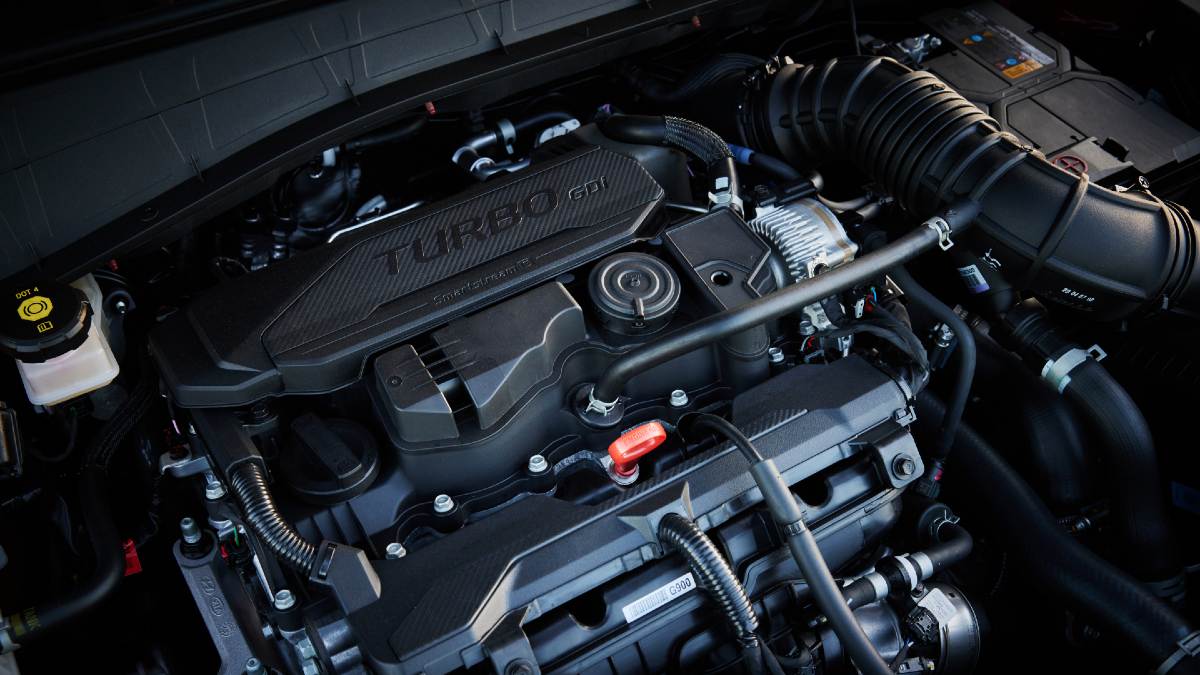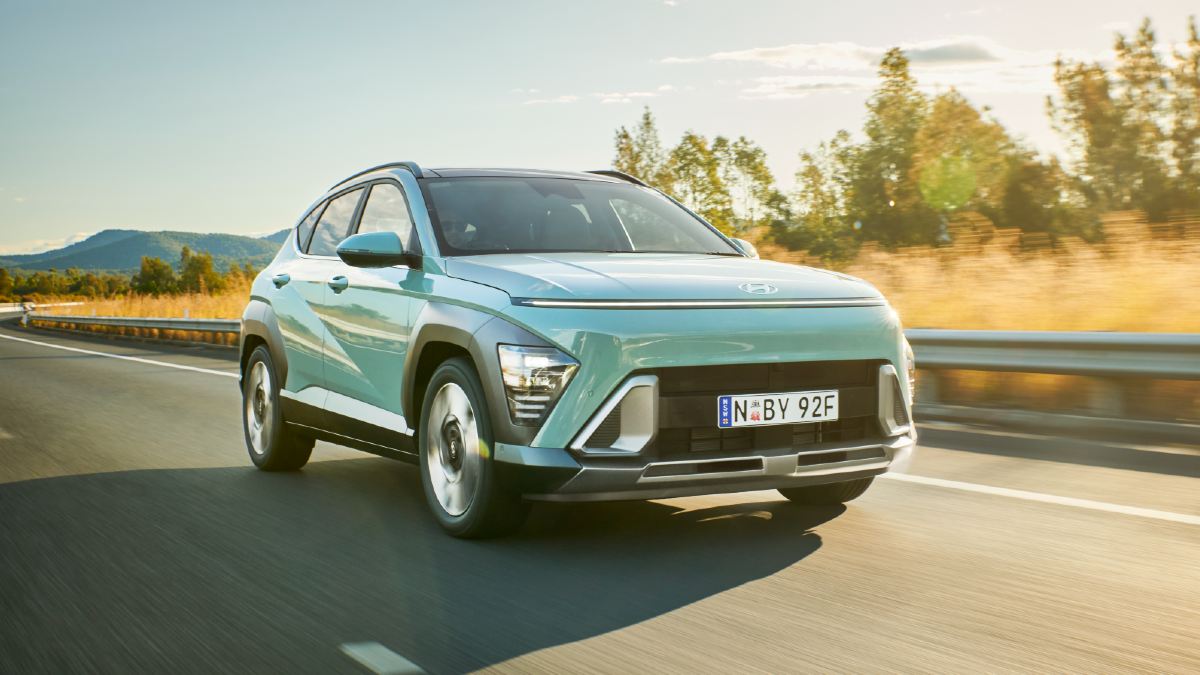The ninth-generation Toyota HiLux has arrived, bringing with it a futuristic forward exterior design, more safety and tech and the same rugged capability owners love. Will the updates tempt private buyers away from the Ford Ranger or are they just enough to keep fleets onside?
2023 Hyundai Kona review

The new Hyundai Kona is the latest arrival in the competitive small compact SUV segment. Is the bolder second-generation Hyundai Kona a substantial step forward over the old model?
So, no pressure then for the new Hyundai Kona.
As seems to happen through vehicle evolution, the sharp looking Hyundai Kona is bigger, has added equipment and become more expensive.
Here, we’re giving you a rundown of the Hyundai Kona launch model line-up and a taste of the driving experience of a couple of different models.
Later in the year, Hyundai will add a petrol-electric Kona Hybrid for the first time and the battery electric Kona EV will be renewed.
On this page
- Pricing and models
- Safety equipment
- Interiors and design
- Engine, specs and fuel efficiency
- Performance and handling
Hyundai Kona pricing and models
There are six models in the 2023 Hyundai Kona line-up that are launching around now, while pricing and equipment for the new Hybrid that goes on-sale around October 2023 has also been announced.
The launch range is defined fundamentally by powertrain. There are four 2.0-litre petrol four-cylinder front-wheel drive Hyundai Konas and two 1.6-litre turbo-petrol all-wheel drives.
In line with global naming policy, the familiar Active, Elite and Highlander badges have been dispensed with. The 2.0 is a Kona or a Kona Premium, both available with an N Line trim package. The turbo kicks off with the N Line equipment level and also can be had as a Premium N Line.
Pricing for the most affordable Hyundai Kona 2.0 is now $32,000 plus on-road costs, a rise of $5100 or nearly 19 per cent compared to its predecessor. The top-spec Hyundai Kona Turbo Premium N Line is priced at $46,500, a 7.3 per cent rise over the old, N Line turbocharged flagship. The four Hyundai Kona Hybrids are priced between $36,000 and $46,500.
Its repositioning places the Hyundai Kona above key small compact SUV rivals like the Mazda CX-30 and Kia Seltos on starting price, on par with the Toyota Corolla Cross and Subaru Crosstrek, and well clear of Chinese budget buys such as the MG ZS.
Key equipment upgrades include a new digital curved screen on the dashboard that includes both a touchscreen and digital instrument cluster. The new Hyundai Kona also gets Hyundai’s Bluelink telematics system which includes features such as automatic collision notification and SOS button for emergency assistance, valet mode, geo-fencing and remote start. Kona Premium adds optimal travel routes, voice control and weather forecasting (among much more).
An eight-speaker Bose audio system is standard, along with Apple CarPlay and Android Auto connection by wireless for Kona and wired for Kona Premium where embedded satellite navigation is also standard.
Konas are trimmed in cloth, Kona Premiums offer leather and the N Line pack adds Alcantara inserts, red highlights and N logos. Other N Line interior features include a specific steering wheel.
The standard Hyundai Kona alloy wheel size is now 18-inches up from 16- and 17-inches. The N Line pack includes 19-inch alloys. Other N Line pack exterior features include body colour cladding, a front bumper with gloss black inserts, side skirts, a wing-type spoiler and a ‘seamless horizon’ centre LED light strip in the nose.
Service intervals for the 2023 Hyundai Kona are set at 12 months/15,000km, but service plans costs have yet to be announced. The warranty is five years and unlimited kilometres.

The new Hyundai Kona is quieter, more comfortable and more dynamic. Image: Supplied
Hyundai Kona safety equipment
The 2023 Hyundai Kona has launched without the expected five-star ANCAP Safety Rating. Testing is happening later in the year, so watch out for a result then.
The new Hyundai Kona builds on the substantial amount of safety gear its predecessor included.
Vitally important autonomous emergency braking now recognises motorcycles as well as cars, pedestrians and cyclists. Junction collision avoidance, direct oncoming traffic collision avoidance and multi anti-collision brake are other new driver assist features.
There are enough cameras, sensors and smarts for the Hyundai Kona to pretty much drive itself down a well-marked relatively straight road keeping centred in its lane. Just keep your hands on the steering wheel!
Other digital assistants monitor the speed limit and the driver’s attention to the road and warn via repeatedly via bings and bongs if we’ve been judged to transgress. You can switch these monitors off, but sadly it’s a task required every time the car is started.
A blind spot monitor displays in the instrument cluster when an indicator is activated, there is a centre-front airbag as part of the seven airbag suite and an uprated park assist system.

The new Hyundai Kona builds on the substantial amount of safety gear its predecessor included. Image: Supplied
Hyundai Kona interiors and design
Having grown appreciably in length, width and wheelbase, it’s no surprise the new Hyundai Kona’s five-door five-seat cabin is more spacious than its predecessor. It’s most noticeable in the rear, where two 180cm adults can fit without scrunching up and clashing elbows.
Even from the base model the Hyundai Kona cabin looks a step up in quality. The curved screen is part of it, but so are some well-chosen trims that are cohesively matched.
But the affordable pricing has to impact somewhere, and that makes itself literally felt in the many hard plastic surfaces including door armrests and the dashboard.
Those amongst us not entirely convinced by touchscreens and voice control will be happy to know the Hyundai Kona still has a profusion of buttons and dials. It makes the dual-zone climate control easy to adjust.
Storage is generous up-front and adequate in the rear. The Hyundai Kona's boot grows in size by 33 litres to 407 litres. You can comfortably fit a couple of suitcases in here, or maybe even the weekly family shop.
Hyundai Kona engine, specs and fuel efficiency
The petrol engine line-up being offered with the 2023 Hyundai Kona is basically carry-over. You’ll have to wait for the Hybrid and EV if you want serious upgrades.
Both engines make the same power and torque as before, but because the Kona has gone up in size and weight they also use more fuel.
The claims are, as always, optimistic. But you should get sub 8.0L/100km in the 2.0 if you are careful and sub 10L/100km in the turbo unless you choose to tap into its deeper well of performance.
Hyundai Kona performance and handling
The 2023 Hyundai Kona rides on a new stronger and quieter platform and body and has a revised and upgraded suspension. So while it doesn’t really change much in powertrain terms, the way it handles, rides and steers has been overhauled. The result is a quieter, more comfortable and more dynamic Hyundai Kona than the one it replaces. Good news considering the old model wasn’t too bad at all.
But there are differences in behaviour between the Kona 2.0 and the Turbo. The former drives via a CVT auto that means more loud engine revving longer. The Turbo has a new eight-speed auto that is more refined and the Kona 2.0 also has a softer more-rounded attitude and lighter steering, while the latter has been firmed and weighted to feel more sporty.
As an all-rounder for the shopping, the commute and picking up the kids from school, the 2.0 is the way to go. If you want to add some weekend joy rides, the ability to overtake faster and some styling drama then the turbo makes sense.
Either way, the sized-up, priced-up 2023 Hyundai Kona has done enough to retain its place on the consideration list of small compact SUV shoppers.
The information provided is general advice only. Before making any decisions please consider your own circumstances and the Product Disclosure Statement and Target Market Determinations. For copies, visit racv.com.au. As distributor, RACV Insurance Services Pty Ltd AFS Licence No. 230039 receives commission for each policy sold or renewed. Product(s) issued by Insurance Manufacturers of Australia ABN 93 004 208 084 AFS Licence No. 227678.
